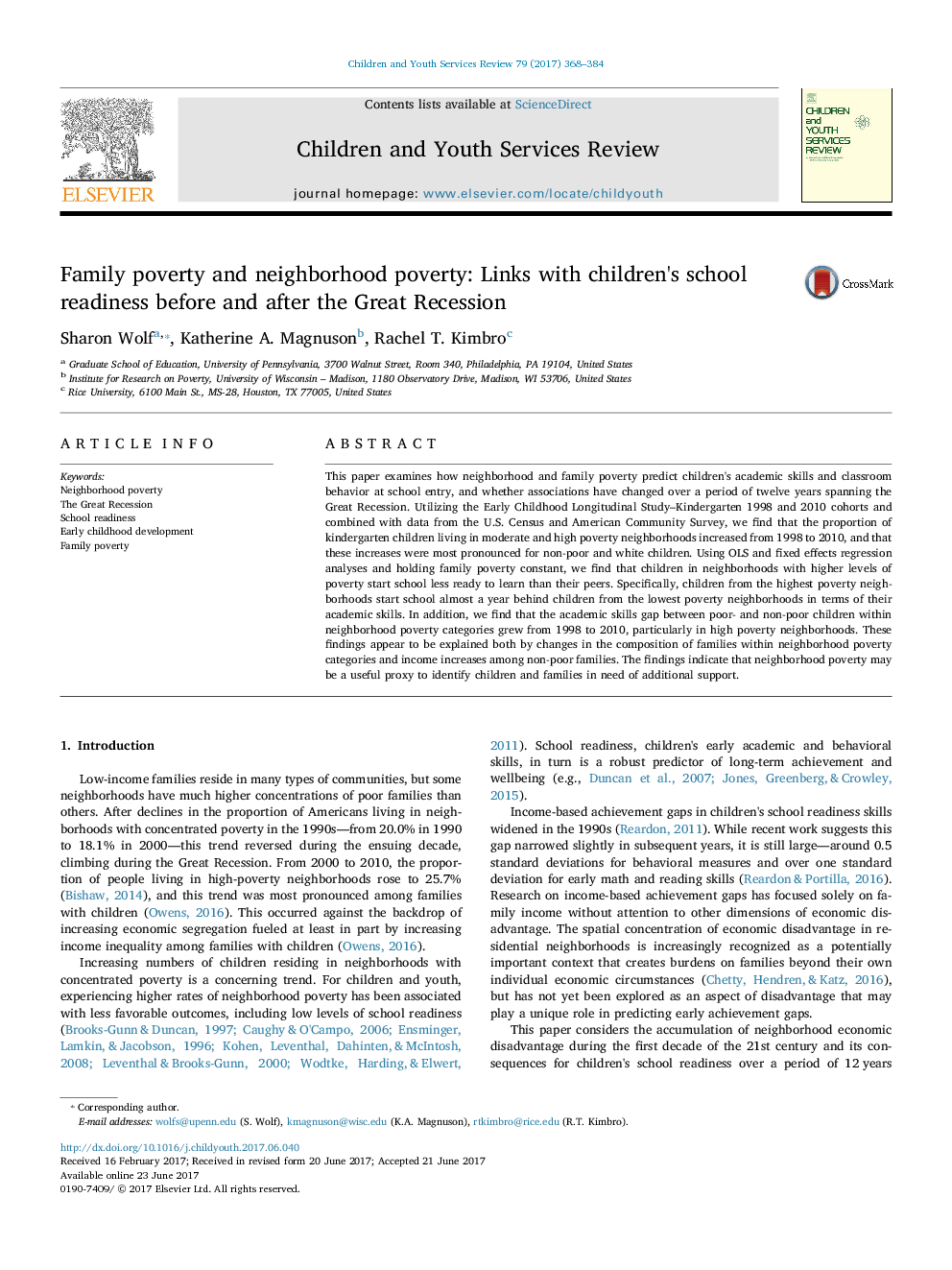ترجمه فارسی عنوان مقاله
فقر خانواده و فقر محله: ارتباط با آمادگی مدرسه کودکان قبل و بعد از رکود بزرگ
عنوان انگلیسی
Family poverty and neighborhood poverty: Links with children's school readiness before and after the Great Recession
| کد مقاله | سال انتشار | تعداد صفحات مقاله انگلیسی |
|---|---|---|
| 129570 | 2017 | 17 صفحه PDF |
منبع

Publisher : Elsevier - Science Direct (الزویر - ساینس دایرکت)
Journal : Children and Youth Services Review, Volume 79, August 2017, Pages 368-384
ترجمه کلمات کلیدی
فقر محله رکود بزرگ، آمادگی مدارس، توسعه دوران کودکی، فقر خانواده،
کلمات کلیدی انگلیسی
Neighborhood poverty; The Great Recession; School readiness; Early childhood development; Family poverty;

